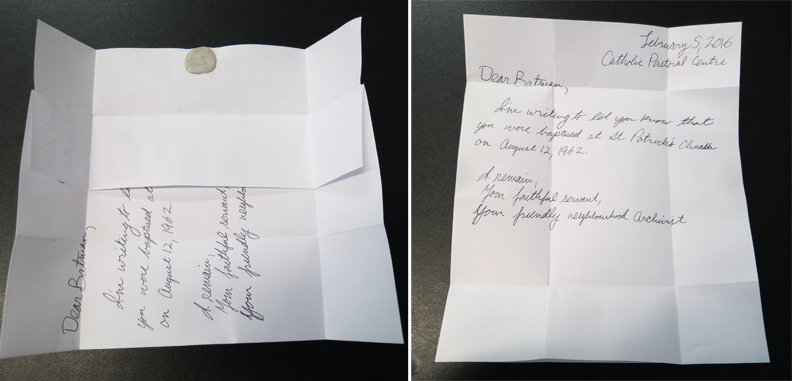Since a good chunk of the ARCAT collection was created during this time, many of our records reflect the history and development of the postal system. We pulled some interesting examples as seen below.
Before Canada was a country, its parts were colonies of both France and England. Any attempts at regular mail service would be modeled on and administered by the Homeland. There were routes between Europe and North America, and smaller routes, for example, between Montreal and Quebec City. Service was not necessarily regular. In 1753, Benjamin Franklin (yes that Benjamin Franklin) and William Hunter were named Deputy Postmasters General for British North America. In 1754, a post office was set up in Halifax, which is considered the first in Canada.
Quebec officially became British territory in 1763, and Hugh Finlay was named first Postmaster in Quebec. A route was established between Quebec, Trois Rivieres, Montreal and New York. As the population grew and infrastructure improved, so did the postal service. More routes were established and service became more regular.
One of the earliest examples in the ARCAT collection is a letter sent from Sandwich, Upper Canada (present day Windsor) to York, Upper Canada (present day Toronto). There are many interesting things to note.
- Before 1851, postage rates were calculated by distance and by number of sheets of paper. If you used an envelope, that counted as an extra sheet, so letters were just folded up and the recipient's information was written on the back.
- This person paid the rate for one sheet being sent a distance of 201-300 miles, 11 pence.
- The letter is marked paid. This means that the sender paid for postage. If it wasn't marked as such, the recipient was meant to pay for it, but they had the right to refuse to accept the letter.
- Self adhesive envelopes weren't invented yet, so they had to seal their letters with wax or with small discs of adhesive. There are many holes in the letters in our collection because of this.
- Before adhesive stamps, letters were hand stamped by local postmasters. The example below was mailed July 22, 1830 from Sandwich, Upper Canada.
 |
| Bishop Macdonell Fonds M AB09.05 1830 |
By 1820 there were 19 post offices in Upper Canada. By 1831 the 'Grand Route' from Niagara to Montreal ran five times per week, and there were routes between York, Sandwich, and Amherstburgh.
 |
| An unpaid letter mailed from Montreal to Ste. Martine on November 4th, 1834, at the rate of 4 1/2 pence: a single sheet sent 0-60 miles. Bishop Power Fonds P AB01.02 1834 |
In 1851, the management of the postal system was transferred to the provinces, and the price of mail was was changed to be 3 pence per half ounce regardless of distance. A lot of the the note paper after this time seems to have gotten thinner!
In 1851, Canada issued its first adhesive postage stamp, the Three Penny Beaver, which was designed by Sir Sanford Fleming. This was the earliest example we could find in the collection. The earliest stamps didn't stick very well, so postmasters continued to use hand stamps until adhesive stamps became mandatory in 1875.
 |
| Bishop Charbonnel Fonds C AB12.05 1856 |
The first stamps issued in Cents instead of Pence were issued in 1859, following the adoption of decimal currency. Below is an example of the 'small queen' stamp. Local letters were 1 cent per half ounce. In the same year, the first street mailboxes were installed in Downtown Toronto. When Canada became a dominion in 1867, the name of the postal system became Royal Mail Canada.
 |
| Archbishop Lynch Fonds L AH20.11 1875 |
In 1903 picture postcards were authorized for use in Canada:
 |
| ARCAT Photograph Collection PH0159/22PC 1911 |
There is a lot more detail to the history of the mail in Canada, but there isn't enough room for all of it in this post. To find more information, check out:
The Canadian Museum of History's Chronology of Canadian Postal History
As a bonus, we recreated how a letter was folded to make its own envelope:





A great entry. Ha ha ha! You all must have a quirky sense of humour. I caught the Batman and Spider-Man references. Love it!
ReplyDelete